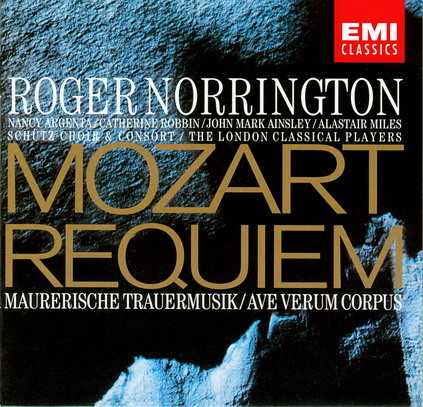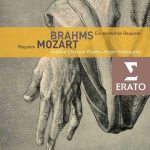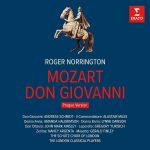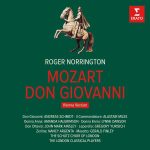
Composer: Wolfgang Amadeus Mozart
Audio CD
SPARS Code: DDD
Number of Discs: 1
Format: FLAC (image+cue)
Label: EMI Classics
Size: 257 MB
Recovery: +3%
Scan: yes
# Maurerische Trauermusik (Masonic Funeral Music), for orchestra in C minor, K. 477 (K. 479a)
Composed by Wolfgang Amadeus Mozart
Performed by London Classical Players
with Catherine Robbin, Nancy Argenta, Alastair Miles, John Mark Ainsley
Conducted by Roger Norrington
# Requiem for soloists, chorus, and orchestra, K. 626
Composed by Wolfgang Amadeus Mozart
Performed by London Classical Players
with Catherine Robbin, Nancy Argenta, Alastair Miles, John Mark Ainsley
Conducted by Roger Norrington
# Ave verum Corpus, motet for chorus, strings & organ, K. 618
Composed by Wolfgang Amadeus Mozart
Performed by Schutz Consort, London Classical Players
with Catherine Robbin, Nancy Argenta, Alastair Miles, John Mark Ainsley
Conducted by Roger Norrington




Thanks!
Duncan Druce – Motivating this, the most radical of all revisions, is Druce’s conviction that Süssmayr’s work ranges from competent to gauche, “but never with the appositeness, grace and imagination we expect throughout Mozart’s compositions.” But rather than reject it outright, Druce takes Süssmayr’s starting material and reconceives it, as he feels “a competent eighteenth-century composer sympathetic to [Mozart’s] style and reasonably knowledgeable as to his methods” might have done. His result often departs from the score we have come to know, but with fascinating results, emphasizing creative orchestral passages into which the voices are nestled. Thus, the Lacrymosa is restructured into two parallel halves with a soothing instrumental interlude and postlude that slams right into the “Amen” fugue, based on the same Mozart fragment as Levin and Maunder but nearly twice as long and mightier in scope, enriching the bounding theme with dramatic turns and even a grand pause. Both the Osanna (which Druce finds “perfunctory”) and Benedictus (“harmonically static”) begin with Süssmayr’s themes but then depart entirely, the latter into a delightful five-minute fantasia. After an extended instrumental prologue, the repetition of Mozart’s opening music returns for the Lux aeterna, which seems a comfortable and apt conclusion after a longer and more adventurous journey than we are accustomed. The sole recording of the Druce edition is by Roger Norrington and the London Classical Players and Schütz Choir (EMI, 1991, reissued on Virgin). Using authentic instruments but larger forces than Hogwood (29 strings, 33 singers), Norrington presents a richer vision that leans toward the romantic side of Mozart, rather than Hogwood’s cooler baroque sensibility. The Norrington CD frames the Requiem with fitting short pieces – a prelude of Mozart’s 1785 Masonic Funeral Ode and a postlude of his simple choral motet Ave verum corpus, an exquisite, ethereal jewel written in June 1791, possibly just as he received that mysterious final commission.
Thank you very much Norrington always has an interesting way of seeing music
I don’t know this version. Thank you very much for this recording.
I guess Norrington is a must have as his ensemble always uses authentic instruments.Thanks for these wonderful recordings of THE REQUIEM.I will perhaps be able to understand this great work better.